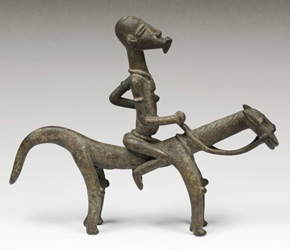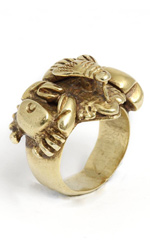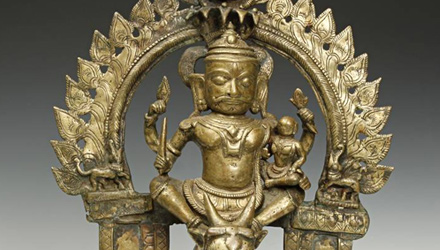Lost-Wax Casting
 |
|
The art of lost-wax casting goes back over 5000 years, evidenced by excavations of copper objects in Israel dating to approximately 3700 BCE. The methodology begins with carving a model from wax or other materials such as tallow, resin and tar. This is then covered with a mold made from a mixture of clay and sand, which in turn, is fired to displace the wax model inside. Molten metal is then poured inside the mold, and once cooled, the mold is broken open to reveal the final casting.
 |
|
For expensive metals such as silver and gold, a method called hollow casting was developed. This utilizes a core piece of clay covered by a layer of wax, which is shaped, carved and designed into the model. It is then surrounded by an outer clay mold and fired. The central clay piece is held in place by pieces of wire or nails during this process. Once the wax is displaced, molten metal is poured inside, the outer mold is broken open and the central clay is removed to reveal the final hollow casting.
The execution of lost-wax casting is complex and requires extensive knowledge of both metallurgy and pottery. As a result, craftsmen capable of lost wax casting often held prestigious and valued positions in society. As one of the oldest art forms known to humankind, its history in many cultures is lost in antiquity. The beginning of African lost-wax art, for example, is a complete mystery. By the time the Portuguese landed in West Africa in the 15th century the technique was already practiced for hundreds of years. In India, the history of lost wax casting reaches over 4000 years and artworks range from everyday utensils to religious bronze icons made with remarkable detail and elegance. Every piece created with this ancient technique becomes a unique one-of-a-kind artwork because both the model and mold are destroyed in the process. In other words, when it comes to art made with the lost wax process, no two are the same.

|
|
Download this Article: Lost-wax Casting.pdf